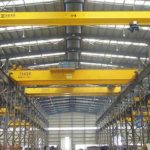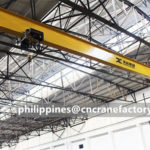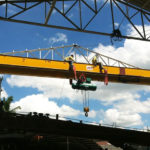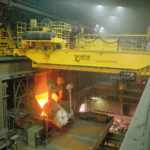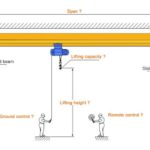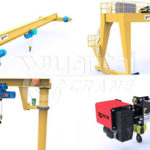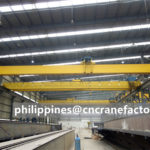What Types of Cranes Can Be Used in the Automotive Industry?
The following three types of cranes are mainly used in the automotive industry, each with unique advantages that contribute to the smooth operation of the production line:
- Overhead crane: Overhead crane has a strong lifting capacity. These heavy-duty cranes hang high above the runway, making them perfect for moving heavy vehicle parts, engines or even entire vehicles in fixed areas.
- Jib Cranes: Jib cranes offer a more focused approach. Their arms can be mounted on posts, walls or directly on workstations, extending outward to provide precise lifting and manoeuvring within designated areas.
- Freestanding Workstation Cranes: These cranes are self-supporting units that are ideal for open workspaces. They combine the lifting capacity of an overhead crane with the flexibility of a jib crane. Freestanding workstation cranes are ideal for areas where flexible lifting is required.

Advantages of Different Types of Cranes for the Automotive Industry
Each type of crane has unique advantages:
- Overhead Cranes: Their powerful lifting capabilities enable them to handle heavy lifting jobs throughout the production process. Overhead cranes cover the entire workspace and are ideal for moving parts between workstations.
- Jib Cranes: Jib cranes excel at precise maneuvering. Their smaller size makes them ideal for tight spaces on assembly lines. Jib cranes are also easy to install and require minimal floor space.
- Freestanding Workstation Crane: The main advantage of a freestanding workstation crane is its versatility. They provide lift for heavier components while providing the flexibility to manoeuvre around obstacles in open workspaces.
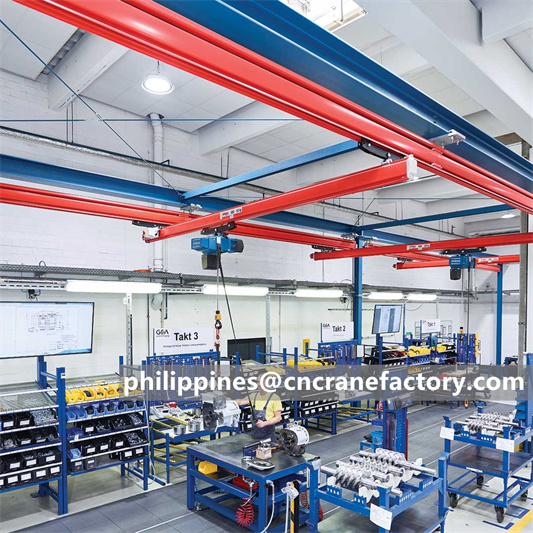
How Are These Cranes Used in the Automotive Industry?
Let’s see how these cranes play an important role in various stages of automobile manufacturing:
- Stamping and body shops: Here, large overhead cranes are mainly used. They handle giant rolls of metal used to stamp body panels and move large, partially assembled bodies between welding stations.
- Engine and Transmission Assembly: This stage involves the precise handling of the heavy-duty engine and transmission. Freestanding workstation cranes and jib cranes come into play, providing technicians with the perfect combination of lifting capacity and manoeuvrability to efficiently assemble these critical components.
- Painting and finishing: Jib cranes can assist with tasks such as positioning car bodies for painting and handling precision parts during the finishing process.
- Assembly lines: Overhead cranes lift and position engines, bodies and other heavy components with high precision. In addition, jib cranes may be present at various workstations to meet specific parts handling needs.
- Warehousing: After production, cranes also play a vital role. Bridge cranes with heavy lifting capabilities manage the efficient storage and retrieval of automotive parts and finished vehicles in warehouses.
Choosing the Right Automotive Industry Crane
Choosing the ideal crane requires careful consideration of several factors:
- Lifting capacity: This is the most critical factor. A crane must be able to safely handle the heaviest loads it will encounter.
- Work area coverage: Consider the horizontal and vertical space the crane needs to cover to effectively perform its task. Imagine the reach of a crane – it needs to reach all the necessary areas.
- Frequency of use: High-production environments may require heavy-duty cranes designed for continuous operation. Consider how often the crane will be used and choose one that can handle that workload.
- Maintenance needs: Choose a crane known for reliability and ease of maintenance. This will minimize downtime and keep your production line running smoothly.
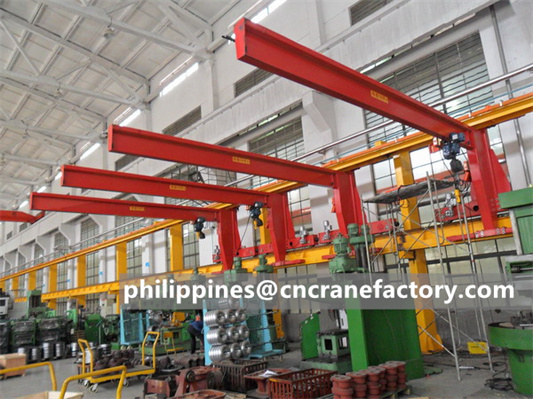
The Future of Cranes in Automotive Manufacturing: Using Modular Crane Systems
As the automotive industry continues to evolve, so do the tools used in production. Modular crane systems are one of the latest innovations that offer a high degree of flexibility on the factory floor. These systems are composed of prefabricated components that can be easily customized and reconfigured to meet specific lifting needs.
Here are some of the advantages of modular crane systems:
- Adaptable: They can be customized to suit different ceiling heights, load capacities and workspace layouts. This allows for easy adjustments when production lines change or new processes are introduced.
- Scalability: Modular systems can be easily expanded or reduced in size as lifting requirements change.
- Cost-Effectiveness: The modular design allows efficient use of materials and simplifies installation, making it a cost-effective solution.
contact us for a Custom Crane Solution for Your Automotive Industry
Cranes in the automotive industry often ensure the efficient movement of heavy parts and materials throughout the production process. From large overhead cranes in press shops to flexible jib cranes assisting on assembly lines, each type plays a vital role in transforming raw materials into the vehicles we rely on every day.
Cranes also play a role in safety, minimizing the risk of injury to workers on the assembly line. In addition, modern cranes are equipped with advanced safety features such as overload protection and automatic shutdown systems to further ensure a safe working environment.
Our Yuantai Crane Company has been exporting overhead cranes, gantry cranes, jib cranes and electric hoists to the Philippines and other Southeast Asian countries as well as countries around the world for more than ten years. We have very rich experience and a green crane manufacturing industry chain. Contact us to get free crane solutions and free quotations, and look forward to our friendly cooperation!
